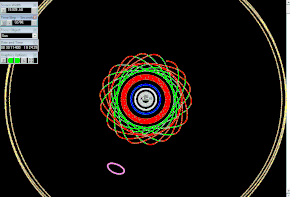|
5222 Ioffe
5222 Ioffe, provisional designation 1980 TL13, is a rare-type carbonaceous Palladian asteroid from the central region of the asteroid belt, approximately 18 kilometers in diameter. It was discovered on 11 October 1980, by Soviet astronomer Nikolai Chernykh at the Crimean Astrophysical Observatory in Nauchnyj, Crimea.[3] It is the largest of the Palladian asteroids apart from Pallas itself. Classification and orbit Ioffe is a member of the Pallas family (801), a small, carbonaceous asteroid family in the central main-belt.[4][7]: 23 It orbits the Sun at a distance of 2.4–3.2 AU once every 4 years and 7 months (1,689 days). Its orbit has an eccentricity of 0.14 and an inclination of 35° with respect to the ecliptic.[1] A first precovery was taken at Palomar Observatory in 1952, extending the asteroid's observation arc by 28 years prior to its official discovery observation at Nauchnyj.[3] Physical characteristicsIn the SMASS classification Ioffe is a carbonaceous B-type asteroid, in line with the overall spectral type of the Palladian asteroids.[1][7]: 23 Photometric observations of this asteroid collected during 2006 show a rotation period of 19.4 ± 0.2 hours with a brightness variation of 0.27 ± 0.03 magnitude.[8] NamingThis minor planet was named in memory of Soviet physicist Abram Ioffe (1880–1960), an expert in electromagnetism, radiology, crystals, high-impact physics, thermoelectricity and photoelectricity. Ioffe was a pioneer in the investigation of semiconductors. Proposed by the Institute of Theoretical Astronomy, naming citation was published on 5 March 1996 (M.P.C. 26763).[2][9] References
External links
|
||||||||||||||||||||||||||||||||||||||||||||||||||||||||||||||
Portal di Ensiklopedia Dunia
